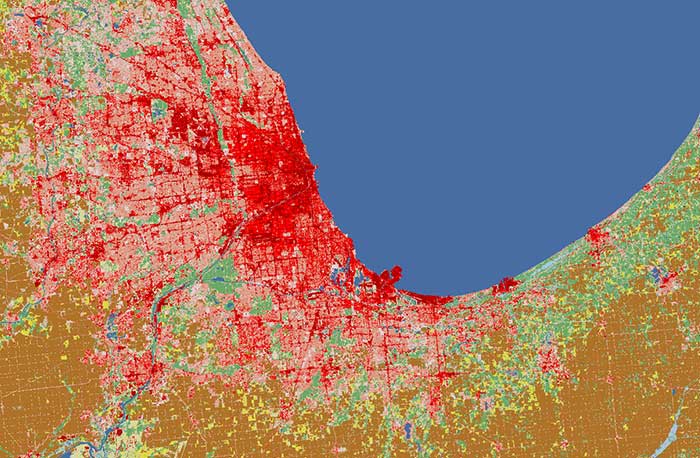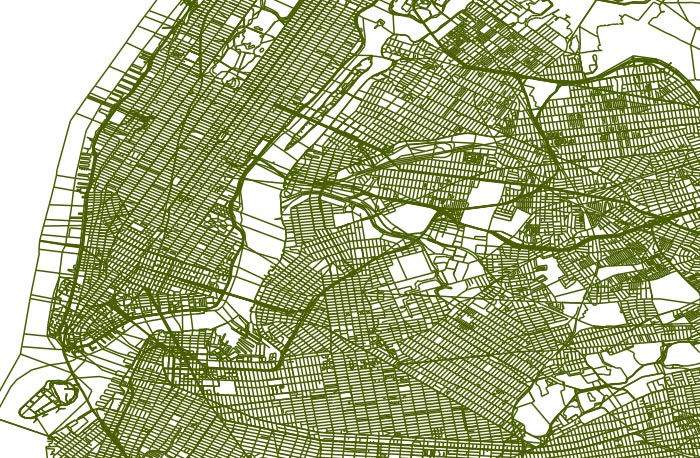View Metadata
World Quaternary Deposits, 1996
- Identification Information
- Data Quality Information
- Spatial Data Organization Information
- Spatial Reference Information
- Entity and Attribute Information
- Distribution Information
- Metadata Reference Information
- Identification Information
- Citation
- Originator
- Environmental Systems Research Institute (Redlands, Calif.)
- Publication Date
- 1996
- Title
- World Quaternary Deposits, 1996
- Geospatial Data Presentation Form
- vector digital data
- Series Information
- Series Name
- ArcAtlas
- Publication Information
- Publication Place
- Redlands, Calif.
- Publisher
- ESRI
- Online Linkage
- https://www1.columbia.edu/sec/acis/eds/dgate/studies/C1301/data/esri_1996_world_quaternary.zip
- Abstract
- World Quaternary Deposits, 1996 is a polygon theme representing quaternary deposits worldwide. Attribute information includes the type and age of the deposits.
- Purpose
- For educational, non-commercial purposes. This dataset is appropriate for use in a GIS.
- Supplemental Information
- Quaternary deposits characterize the youngest period (the Quaternary) of the earth's geological history. This period began approximately 1.6 million years ago. The principal features of the period are as follows: 1. A cyclic recurrence of landscape and climatic changes including the recurrence of warm (interglacial) and cold (glacial) periods 2. A cooling climatic trend (recent glacial and interglacial periods were colder than more ancient periods.) 3. A high level of tectonic activity and seismicity (mountains were uplifted several kilometers in some parts of the youngest orogenic zone -- the Alpine zone) 4. The appearance of humans and the settlement of tropical and extratropical areas The earth's landscape was transformed during the Quaternary. Glacial periods were distinguished by specific natural zones. As a result of the degradation of forest zones, hyperzonal structures with prevailing open areas appeared in the temperate and tropical belts. The glacial periods were dry periods, so relief formation and sedimentation were more active during these times. These processes were further encouraged by reductions in the level of the world ocean by 100 meters or more during glacial periods. The last glacial period (known as the Wisconsin or Valdai Ice Age) ended about ten thousand years ago, which is not long ago on the geological time scale. It was replaced by the present interglacial period called the Holocene. As a result of warmer and wetter conditions, forest zones and the contemporary polyzonal structure of the landscape were re-established and the level of the world ocean rose. All these changes facilitated development of denser vegetation cover and a sharp decrease in sedimentation rate. The rate of soil formation increased. Therefore, the lithogenic base of the processes occurring in the components of the present day landscape (soil, vegetation, and animal life) and economy (construction, reservoirs, etc.) is the deposits formed in the last glacial period. These deposits have been exposed and transformed by soil formation in the upper few meters of the earth's surface (shown on the soil maps). Along with these deposits, older Quaternary deposits and, locally, Prequaternary rocks are exposed. However, the basic landscape is formed by complicated Late Quaternary deposits. The complex structure of Quaternary deposits is the result of the wide range of genetic types of deposits formed under different lithoclimatic and geomorphologic conditions.
- Temporal Extent
- Currentness Reference
- publication date
- Time Instant
- 1996
- Bounding Box
- West
- -180
- East
- 180
- North
- 85
- South
- -85
- Theme Keyword
- geoscientificinformation
- Theme Keyword Thesaurus
- ISO 19115 Topic Categories
- Theme Keyword
- Quaternary deposits
- Theme Keyword Thesaurus
- None
- Place Keyword
- Earth
- Place Keyword Thesaurus
- Library of Congress Subject Headings
- Temporal Keyword
- 1996
- Temporal Keyword Thesaurus
- None
- Access Restrictions
- For current Columbia affiliates only.
- Use Restrictions
- For educational, non-commercial use only.
- Status
- Complete
- Maintenance and Update Frequency
- None planned
- Point of Contact
- Contact Organization
- ESRI
- Delivery Point
- 380 New York Street
- City
- Redlands
- State
- California
- Postal Code
- 92373-8100
- Country
- USA
- Contact Telephone
- 909-793-2853
- Contact Facsimile Telephone
- 909-793-5953
- Contact Electronic Mail Address
- info@esri.com
- Hours of Service
- 7:00 a.m.-5:30 p.m. Pacific time, Monday-Friday
- Native Data Set Environment
- Microsoft Windows XP Version 5.1 (Build 2600) Service Pack 3; ESRI ArcCatalog 9.3.1.1850
- Data Quality Information
- Lineage
- Spatial Data Organization Information
- Direct Spatial Reference Method
- Vector
- Point and Vector Object Information
- SDTS Terms Description
- SDTS Point and Vector Object Type
- G-polygon
- Point and Vector Object Count
- 8509
- Spatial Reference Information
- Horizontal Coordinate System Definition
- Geographic
- Latitude Resolution
- 0.000000
- Longitude Resolution
- 0.000000
- Geographic Coordinate Units
- Decimal degrees
- Geodetic Model
- Horizontal Datum Name
- D_Clarke_1866
- Ellipsoid Name
- Clarke 1866
- Semi-major Axis
- 6378206.400000
- Denominator of Flattening Ratio
- 294.978698
- Entity and Attribute Information
- Entity Type
- Entity Type Label
- quat_dep
- Entity Type Definition
- Quaternary deposits
- Attributes
- FID
- Internal feature number. (Sequential unique whole numbers that are automatically generated.)
- Definition Source
- ESRI
- Shape
- Feature geometry. (Coordinates defining the features.)
- Definition Source
- ESRI
- AREA
- Area
- PERIMETER
- Perimeter
- SAQDD_
- South America
- SAQDD_ID
- South America
- TYPE
- Contains a code for the type of quatenary deposits
- 0
- Lake
- 1
- Eluvial
- 2
- Colluvial and outcrops of Pre-Quaternary rocks
- 3
- Alluvial
- 4
- Lacustrine
- 5
- Glacial (in the mountains including fluvioglacial and lacustrine-glacial)
- 6
- Fluvioglacial
- 7
- Marine
- 8
- Eolian
- 9
- Loess
- 10
- Loess-like with fossil ices
- 11
- Volcanic
- 12
- Deluvial, decerptional, defluctional
- 13
- Solifluctional tropical
- 14
- Proluvial and deluvial-proluvial
- 15
- Outcrops of Pre-Quaternary rocks
- 16
- Marine biogenic
- 19
- Colluvial, glacial and solifluctional (cryogenic)
- 24
- Deluvial and colluvial with outcrops of Pre-Quaternary rocks
- 25
- Eluvial and deluvial
- 26
- Eluvial and outcrops of Pre-Quaternary rocks
- 27
- Eluvial and solifluctional (cryogenic) with deluvial
- 28
- Glacial, deluvial and cryogenic solifluctional
- 29
- Glacial and colluvial with outcrops of Pre-Quaternary rocks
- 30
- Alluvial and deluvial
- 34
- Lacustrine-alluvial
- 35
- Lacustrine-glacial
- 36
- Alluvial-marine
- 37
- Alluvial-proluvial
- 38
- Lacustrine-chemical
- 40
- Eluvial and eolian
- 42
- Volcanic-sedimentary (terrigenous)
- 43
- Solifluctional (tropical) and deluvial
- 44
- Deluvial-colluvial and proluvial
- 45
- Deluvial and cryogenic solifluctional
- 46
- Deluvial-colluvial and solifluctional
- 55
- Recent glacier
- AGE
- Contains a code for the age of deposits
- 1
- Neogene-Upper Quaternary
- 2
- Miocene - Lower Quaternary
- 3
- Pliocene - Quaternary
- 4
- Pliocene - Lower Quaternary
- 6
- Pliocene - Middle Quaternary
- 7
- Pliocene - Upper Quaternary
- 8
- Lower Quaternary
- 9
- Lower - Middle Quaternary
- 10
- Middle Quaternary
- 11
- Middle - Upper Quaternary
- 12
- Upper Quaternary
- 13
- Upper Quaternary - Recent
- 14
- Recent
- 15
- Quaternary undifferentiated
- NAQDD_
- North America
- NAQDD_ID
- North America
- EUQDD_
- Europe
- EUQDD_ID
- Europe
- AUQDD_
- Australia
- AUQDD_ID
- Australia
- ASQDD_
- Asia
- ASQDD_ID
- Asia
- AFQDD_
- Africa
- AFQDD_ID
- Africa
- Distribution Information
- Format Name
- geopackage
- Distributor
- ESRI; ESRI International Distributors
- Name
- Metadata Reference Information
- Metadata Date
- 20090701
- Metadata Contact
- Contact Information
- Contact Organization Primary
- Contact Organization
- Research Data Services (RDS), Columbia University Libraries
- Contact Person
- GIS/Metadata Librarian
- Contact Address
- Address
- 420 W. 118th St. 215 IAB, MC 3301
- City
- New York
- State or Province
- NY
- Postal Code
- 10027
- Country
- USA
- Contact Voice Telephone
- (212) 854-6012
- Contact Electronic Mail Address
- data@library.columbia.edu
- Hours of Service
- 7:00 a.m.-5:30 p.m. Pacific time, Monday-Friday
- Metadata Standard Name
- FGDC Content Standards for Digital Geospatial Metadata
- Metadata Standard Version
- FGDC-STD-001-1998


